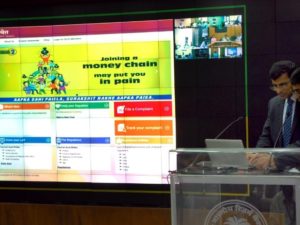
The fate of three near-bankrupt steel companies — Essar Steel, Bhushan Steel and Electrosteel Steels — which together owe lenders nearly `1 lakh crore will now be decided by the National Company Law Tribunal (NCLT). Having failed to recover their dues or rope in either strategic or financial investors, lenders to these companies finally agreed on Thursday to resort to the Insolvency and Bankruptcy Code (IBC), bankers familiar with the development said. The decision follows a directive by Reserve Bank of India (RBI) on June 13 to banks asking them to refer a dozen troubled companies — with a combined debt of close to Rs.2.4 lakh crore — to the tribunal.
Corporate watchers said a new chapter was unfolding for India Inc, traditionally unfamiliar with insolvencies and, more often than not, able to wrangle concessions and bailouts, often with the help of those in power. Both the RBI and the government are attempting a speedy resolution to the problem of non-performing assets (NPAs) that is paralysing banks and stymieing investments.
While it has been known for several years now that many of the country’s top corporates are financially fragile, it was former RBI governor Raghuram Rajan who first forced banks to accept the reality and classify assets correctly in December 2015. 
Bankers have been given a fortnight within which to move the tribunal. Among the other companies that have been refereed to the NCLT are Jyoti Structures, Lanco Infratech, Monnet Ispat and JP Infratech. The 12 accounts identified by the central bank are those to which banks have an exposure of more than Rs 5,000 crore, more than 60% of which has been recognised as NPAs. Once these cases are with the NCLT, the lenders need to set up a committee of creditors that will come up with a plan on how the asset will be tackled. If the committee is unable to find a solution within 180 days — this can be extended to 270 days — the borrowing entity will go into liquidation.
The three steelcos — Essar, Bhushan and Electrosteel — together have a manufacturing capacity of close to 18 million tonnes per annum. The total debt of the Essar Group is estimated at Rs.1.17 lakh crore. Most private banks have sold off their Essar Steel exposure to asset reconstruction companies, taking a haircut of more than 50%; most PSU banks have declared Essar Steel an NPA.
Essar Steel, promoted by the Ruias, had at a meeting last year requested banks to convert Rs.12,200 crore of loans into preference capital and equity shares.
While Rs.9,000 crore was sought to be converted into preference shares, to be redeemed after 12-18 years, the company had requested the remaining Rs 3,200 crore be converted into common equity. For the balance Rs 31,800 crore, the company had sought a prolonged repayment period. Senior bankers had told FE such a deep restructuring proposal, if approved by the consortium, would amount to taking a haircut of nearly 30%.
Bhushan Steel, promoted by the Singals, has been unable to service its loans for several years now thanks to the stress on cash flows, partly the result of large steel imports into the country which drove down prices. While banks had been monitoring the company’s operations and financials, they were unable to come up with a solution. In August 2014, a senior company executive was arrested around the time the former chairman and managing director of Syndicate Bank SK Jain was arrested in an alleged case of bribery.
In the case of Electrosteel Steels, banks decided to initiate a strategic debt restructuring, with a view to roping in a new investor and beefing the equity capital of the company. However, despite many attempts, banks were unable to find a buyer within the stipulated 18 months, and were compelled to classify the account as an NPA.







